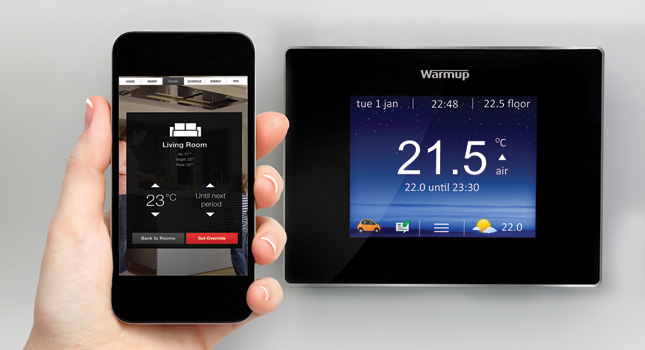

The government wants to help householders reduce their energy bills with its ‘Power to Switch’ campaign. Tradespeople must play their part by advising their customers on which devices can help them save money more easily, says Andrew Stimpson
On 16 February the Department of Energy & Climate Change (DECC) launched its ‘Power to Switch’ campaign in a bid to encourage more people to save money on their energy bills by switching supplier. According to DECC, there is £2.7 billion up for grabs, with millions of households able to save £200 or more.
Currently around 10 million people in the UK use price comparison websites each year to swap supplier or find a better deal. These sites are quick, convenient and save consumers a lot of time shopping around. However, we believe that the installer has a role to play as well, especially with the arrival of ‘smart’ stats.
Linked to the internet, some smart thermostats can look at how a household uses its energy and then link up with a price comparison website to work out which tariff and which supplier would be cheapest.
This is in contrast to some other smart stats, which are linked to a particular energy company.
All smart thermostats should save money for the bill payer. The claims for how much can be saved vary widely from one manufacturer to another, with some claiming up to 30%.
Obviously, the potential savings will depend on the type of property, the type of heating and how the heating is being used. The advice of a trusted tradesperson is invaluable in helping a customer make the right choice of stat and to give them reasonable expectations.
As a starting point, a smart thermostat should be easy to programme and have the ability to be accessed remotely through the internet – which some ‘smart’ stats don’t. However, there’s a huge range of functionality from the many brands on offer. Some will learn how a household is using its heating and adjust accordingly, others switch themselves off or on in response to room sensors or ‘geofencing’, which uses GPS to detect where a phone is. A few allow ‘zoning’, setting different rooms to different temperatures.
From an installer’s perspective, the ideal smart stat is quick and simple to swap with an existing thermostat and requires no input to set up. Warmup’s 4iE smart WiFi thermostat, for example, is installed like a standard three- or four-wire thermostat. The householder then sets it up themselves using a WiFi connection as they would a smartphone.
Self-programming thermostats are a big bonus for many users, both in terms of ease of use and their money saving potential. A ‘learning’ mode, where the thermostat is constantly adjusting to provide comfort at the optimum energy usage, leads to increased savings.
One of the most challenging aspects for both householders and tradespeople, when considering which smart stat is best, is the array of products now on the market.
Choosing an established brand with a track record and customer service operation in the UK is a good place to start. That way, if a householder or tradesperson needs any support, they can call and speak to an expert.
Andrew Stimpson is chief executive officer of Warmup.
If you'd like to keep up-to-date with the latest developments in the heating and plumbing industry, why not subscribe to our weekly newsletters? Just click the button below and you can ensure all the latest industry news and new product information lands in your inbox every week.